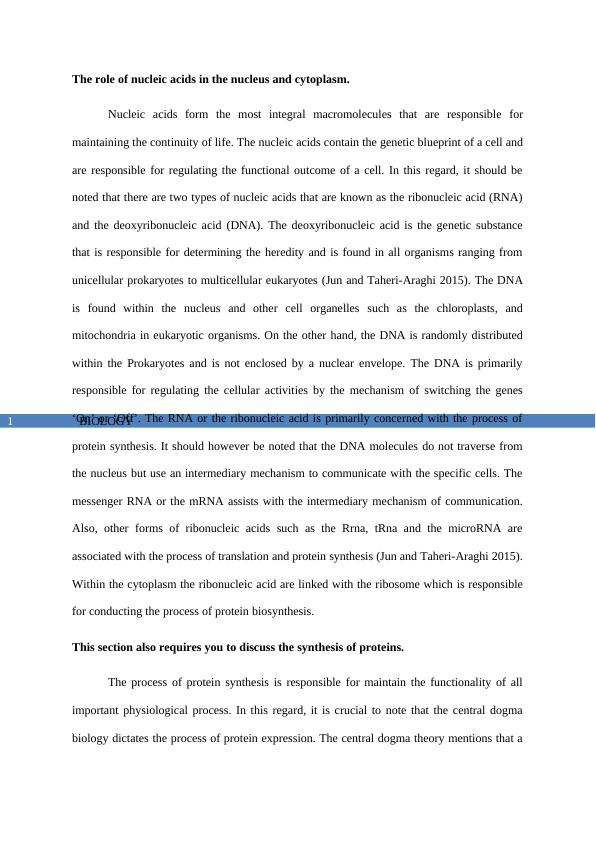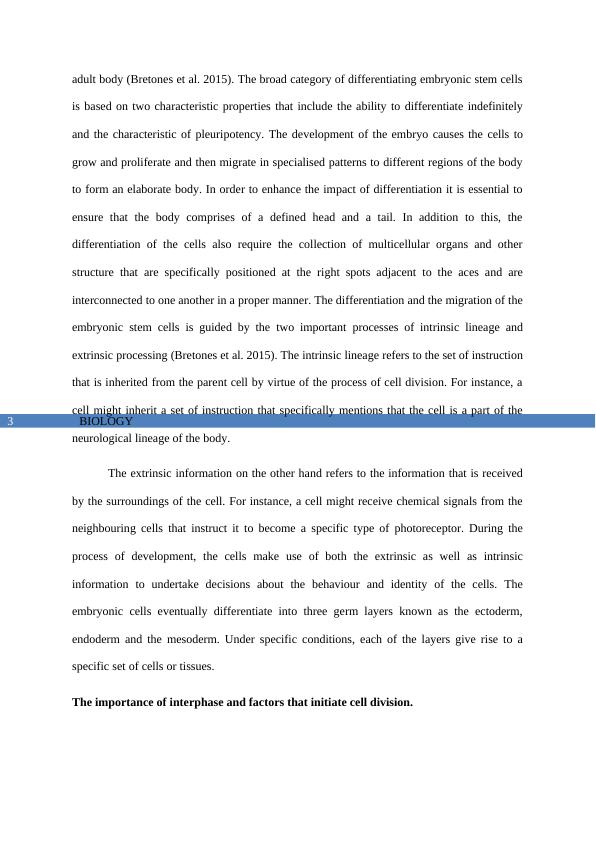Cell Biology: Nucleic Acids, Protein Synthesis, Embryonic Stem Cells, Cell Division, and Cancer Cells vs Normal Cells
Cell biology is the study of cells, their structure, and their functions. This assignment is an illustrated report on cell biology, exploring the different types of cells, their development, and their applications in medicine and other fields.
11 Pages2493 Words377 Views
Added on 2022-10-04
About This Document
This article discusses the role of nucleic acids in the nucleus and cytoplasm, the synthesis of proteins, the generation of specialized tissues from embryonic stem cells, the importance of interphase and factors that initiate cell division, and the comparison and contrast of cancer cells with normal cells.
Cell Biology: Nucleic Acids, Protein Synthesis, Embryonic Stem Cells, Cell Division, and Cancer Cells vs Normal Cells
Cell biology is the study of cells, their structure, and their functions. This assignment is an illustrated report on cell biology, exploring the different types of cells, their development, and their applications in medicine and other fields.
Added on 2022-10-04
ShareRelated Documents
End of preview
Want to access all the pages? Upload your documents or become a member.
Protein Synthesis and Nucleic Acids in Human Genetics
|9
|2234
|96
Assignment On Protein Synthesis
|6
|1904
|406
Assignment | Introduction to Genetic Material
|9
|2630
|366
The New Republic Assignment 2022
|3
|670
|19
Concept of Inherited Diseases - Assignment
|10
|2800
|308
Functions of Nucleic Acids in Living System Report
|5
|845
|166




